Abstract
The current research explored whether generational effects exist in the attitudes towards overweight/obese people regarding the following: dislike, empathy, and attraction to them. The sample was made up of a Generation Z and a Generation Jones sample, and descriptive statistics, normality tests, and Mann-Whitney U tests were used. The findings did not indicate any significant effects between the three variables across the two generations, even though slight trends indicated that Generation Jones exhibited marginally higher levels of dislike and empathy. From the findings, it is implied that generational factors do not notably influence attitude towards obesity, hence necessitating further research to ascertain other plausible cultural or environmental factors influencing attitude.
Background
Attitudes are changeable variables on the societal scale and personal. The interplay between factors such as different cultures, socioeconomic status, gender, environment, and the generational gap can change and form new attitudes. This study, particularly, is going to investigate the differences in attitudes and stigmatisation towards obesity between Gen Z (1997-2012) and Gen Jones (1954-1965). Results will bring insight into the current state of the attitudes towards obese people in society. Showing the trajectory of the trend. Based on the result, it will be possible to assume the future of the attitudes towards obesity. Additionally, generational differences could highlight pivotal aspects of social and cultural behaviour which shape the attitudes. Such insight would be beneficial for further improving people’s attitudes.
There is plenty of evidence of prejudice against obese people dating from a 1955 study by Keys, which presented attitudes of 1000 people on overweight people being widely characterised as socially handicapped, morally and emotionally impaired (The original source annotated that the term “fat people” was used due to not specified a particular BMI value in their research. This indicates that their survey did not include attitudes specifically related to the medical condition of obesity, which may have influenced how participants viewed individuals classified under that term. Essentially, the choice of wording reflects a broader or more general perspective without any malicious intentions). The majority of the research during the Gen Jones era associated overweight and obese people with a variety of negative terms. For instance, several survey research showed common negative stereotypes around physical appearance, characterising obese people as unappealing (Harris et al., 1982) and aesthetically displeasing (Wooley & Wooley, 1979).
Moreover, Milman, in his comprehensive analysis of multi-case studies and autobiographical accounts (1980), depicted a common view of that time of obese women as unfeminine, sexually repulsive or a deviant sexual object. The stigmatisation of overweight and obese people was apparent in all spheres of life. For example, in the workplace, they faced reoccurring discrimination (Rothblum et al., 1990), which could even result in them being deprived of promotion to a higher position (Larkin & Pines, 1979).
Clearly, an overwhelming amount of evidence illustrates a prejudiced society’s attitude towards obese people during Gen Jones’s time. In order to see if that trend proceeded to Gen Z, more modern papers should be viewed.
Generation Z was the first one to be born during the mass spread and availability of the Internet, which led to Gen Z engaging in International online communication from an early age. Such exposure to a global multicultural online community and access to diverse information helped Gen Z to develop a more inclusive approach to social interactions. (Chen & Ha, 2023). Tech-savvy Gen Z is more careful with consumed information. Social media
platforms like Instagram and TikTok have played a pivotal role in promoting diverse body representation and challenging traditional beauty standards. Their engagement with body- positive content on social media led to the development of positive body image, better emotional well-being and body-positive movement in recent years (Cohen et al., 2020). Nevertheless, such a positive attitude towards inclusive body image does not contribute to the issue of obesity. A recent study on the correlation between Optimism and healthy, Overweight and obese Generation Z reported that there was no significant relationship between BMI and optimism (r = -.003), as well as no significant difference between obese groups for optimism and healthy, overweight (p = .55), (Tucker, 2020). Concomitantly, acceptance of diverse body shapes does not mean ignoring health issues like obesity. In fact, Gen Z exhibits concern about global environmental issues and focuses on personal health, mental well-being and ethical behaviour (Lendvai, 2022). This suggests that a positive attitude about the body image of Gen Z is a healthy approach. This could be supported with a thematic analysis of 1918 public videos tagged #GenZ on TikTok social media. Generational identity is represented by their sense of collectiveness, self-awareness and reflectiveness, and inclusivity in terms of body image and social belonging (Stahl & Literat, 2022).
Rationale and Hypothesis
There are no direct studies on what kind of attributes Generation Z exhibits towards obese people and whether they engage in discriminative behaviour towards overweight people. This report aims to fill that gap by researching Gen Z attitudes towards obese people and comparing it with the same data collected from Generation Jones. It is important to research generational differences in addressing societal issues like discrimination based on body size, especially since obesity remains a public health concern. Highlighting the differences could not only help in reducing stigma effectively under generational values, but it could also inform future public health campaigns.
Research Question: Is there a difference in attitudes towards obese people between Gen Z and Gen Jones?
Dislike Hypothesis: Generation Z will exhibit less dislike towards obese individuals compared to Generation Jones.
Empathy Hypothesis: Generation Z will display higher empathy levels towards obese individuals than Generation Jones.
Attraction Hypothesis: Generation Z will hold more neutral or positive attitudes regarding attraction towards obese individuals compared to Generation Jones.
Method
Participants
The study included 20 participants divided into two generational groups: Generation Z (10 participants) and Generation Jones (10 participants).
Age
The mean age of participants was calculated for each group. For Generation Z, the ages ranged from 18 to 26 years, while for Generation Jones, the ages ranged from 59 to 69 years. Descriptive statistics, including mean and standard deviation for age, were computed to summarise the demographic characteristics.
Gender
The gender distribution was recorded for both groups, with frequencies calculated to provide an overview of participant demographics.
Recruitment
A total number of participants were collected using a convenience sampling method. For Generation Z participants, the sister of the researcher, a freshman student at the University of Budapest Art, was asked to help. She shared the questionnaires with her friends and classmates. Generation Jones participants were recruited via the researcher’s mother, who is currently working in an educational institution, by distributing questionnaires among colleagues.
Inclusion/Exclusion Criteria
Participants were included in the study based on their age, aligning with the defined generational ranges: 18–26 years for Generation Z and 59–69 years for Generation Jones. Responses outside these age ranges were excluded to maintain consistency in generational comparison.
Design
The study employed a between-subjects design, with participants categorised into two independent groups based on their age: Generation Z (18–26 years) and Generation Jones (59–69 years). The independent variable was the age group, while the dependent variables were participants’ attitudes across the three dimensions of dislike, empathy, and attraction.
Materials
The study utilised a questionnaire designed to assess attitudes toward overweight and obese individuals. The questionnaire comprised 12 items divided into three categories corresponding to the dependent variables: dislike, empathy, and attraction.
Dislike (Questions 1–4): The following questions reveal the negative attitude of participants in this section, such as not wanting to hire overweight people or linking overweight people with certain characteristics.
Example Question: “I would never hire an overweight person if I had my own business.”
Empathy (Questions 5–8): These items scored the respondent’s ability to take the perspective of the overweight person and his or her response to unsolicited counsel.
Example Question: “It’s okay to give weight loss advice to obese/overweight people even if you don’t know them very well.”
Attraction (Questions 9–12): This section explored participants’ perceptions of attraction to overweight people.
Example Question: “Overweight people are sexually repulsive.”
Participants responded to all items on a 5-point Likert scale ranging from 1 (Strongly Agree) to 5 (Strongly Disagree). Reverse-scored items were adjusted before analysis to ensure consistency in interpretation. Using the Qualtrics platform enabled the collection of responses from participants across two distinct age groups and ensured anonymity in data collection. The questionnaire was made available in both English and Serbian to accommodate the linguistic needs of the participants. However, the Serbian translation was omitted from the appendix for brevity and relevance to the expected readership. The Participant Information Sheet, Consent Form, Questionnaire, and Debriefing Page are in Appendix A.
Ethics
The study was conducted under regulations that ensured participants’ safety. All respondents received an information sheet explaining the purpose of the study, the procedure, and their right to withdraw before submitting the data. Informed consent was obtained electronically.
Data collection was anonymous, with responses stored on a password-protected device. All data will be destroyed on completion of the module. The online questionnaire, via Qualtrics, thus ensured privacy and convenience. Permission was obtained from the University of Essex Online Ethics Committee. The questionnaire was available in both English and Serbian so that the language requirements were taken into account. The risk was minor, as participants reflected upon their attitudes by not disclosing their personal information. Documentation (Consent Form, Information Sheet, and Debriefing Page: Appendix A).
Results
Descriptive Statistics
the descriptive statistics for participants’ ages across the two generational groups, Generation Z and Generation Jones, are presented in Table 1. These include measures of central tendency (mean) and spread (standard deviation, skewness, kurtosis, and range). Generation Z participants had a mean age of 18.80 years (SD = 1.23), with ages ranging from 18 to 22. Skewness (S = 2.26, SE = .69) and kurtosis (K = 5.88, SE = 1.34) indicate a slight positive skew and leptokurtic distribution, reflecting a cluster of younger participants close to the lower age limit. Generation Jones participants had a mean age of 61.00 years (SD = 1.50), with ages ranging from 60 to 64. Skewness (S = 1.26, SE = .69) and kurtosis (K = .26, SE = 1.34) suggest a relatively symmetric and normal age distribution for this group.
The descriptive statistics for participants’ gender are presented below. The sample comprised 20 participants, with 16 females (80%) and 4 males (20%). This distribution highlights a predominance of female participants across the sample, which may influence the interpretation of gender-related findings. Figures illustrating the demographic breakdown, including age (Figure 1) and gender (Figure 2), are included in Appendix B.
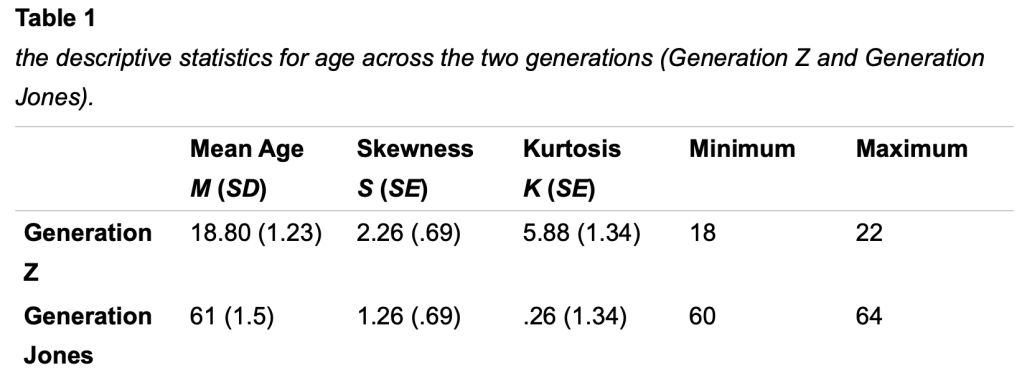
Normality Tests
Dependent Dislike
The results for the dependent variable “Dislike” are presented below in Table 1, highlighting the differences between Generation Z and Generation Jones. Descriptive statistics revealed that Generation Z reported a mean dislike score of 3.80 (SD = 0.56), while Generation Jones had a slightly higher mean score of 3.98 (SD = 0.71). To assess the normality of the data, Shapiro-Wilk tests were conducted separately for each generation. As shown in Table 1, the Shapiro-Wilk test for Generation Z, the results indicated a violation of normality (p = 0.009), suggesting the data are not normally distributed. However, the data for Generation Jones met the assumption of normality (p = 0.464). Supporting these findings, visual inspections of Q-Q plots (Figure 1) and detrended Q-Q plots (Appendix C) showed deviations from the normal distribution for Generation Z, while the distribution for Generation
Jones appeared more aligned with normality. Boxplots illustrated a slightly wider range of scores for Generation Jones, reflecting greater variability compared to Generation Z (Figure 2). These findings suggest a generational difference in attitudes towards obese individuals, with Generation Jones exhibiting marginally stronger negative attitudes, as reflected in their higher mean dislike score.

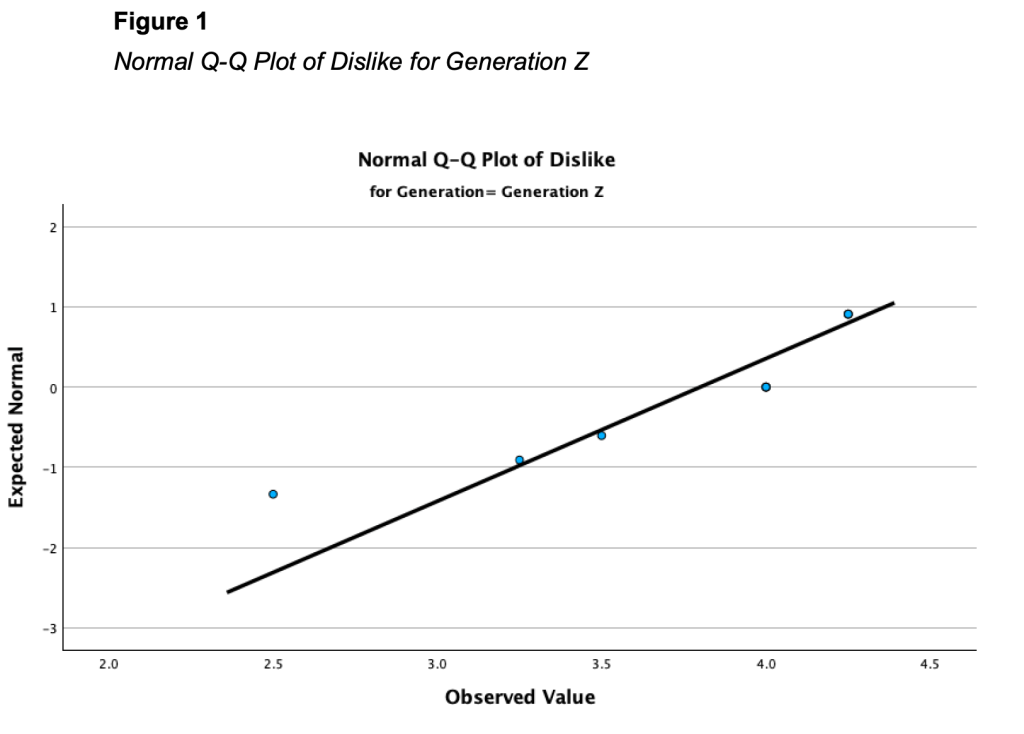

Dependent Empathy
The results for the dependent variable “Empathy” are presented below in Table 1, highlighting the differences between Generation Z and Generation Jones. Descriptive statistics indicated that Generation Z reported a mean empathy score of 3.87 (SD = 0.49), while Generation Jones had a slightly higher mean score of 4.15 (SD = 0.67). To evaluate the normality of the data, Shapiro-Wilk tests were performed separately for each generation. Both Generation Z (p = 0.615) and Generation Jones (p = 0.465) satisfied the assumption of normality, indicating that the empathy scores for both generational groups followed a normal distribution.
Visual analyses provided additional confirmation. Q-Q plots (Figure 1, Figure 2) and detrended Q-Q plots (Appendix D) for both generations revealed that data points closely aligned with the expected normal line, supporting the normality of the distributions. Additionally, boxplots (Figure 3) illustrated a slightly wider range of empathy scores for Generation Jones, reflecting greater variability compared to Generation Z. These results suggest generational differences in empathy, with Generation Jones exhibiting marginally higher empathy levels overall.



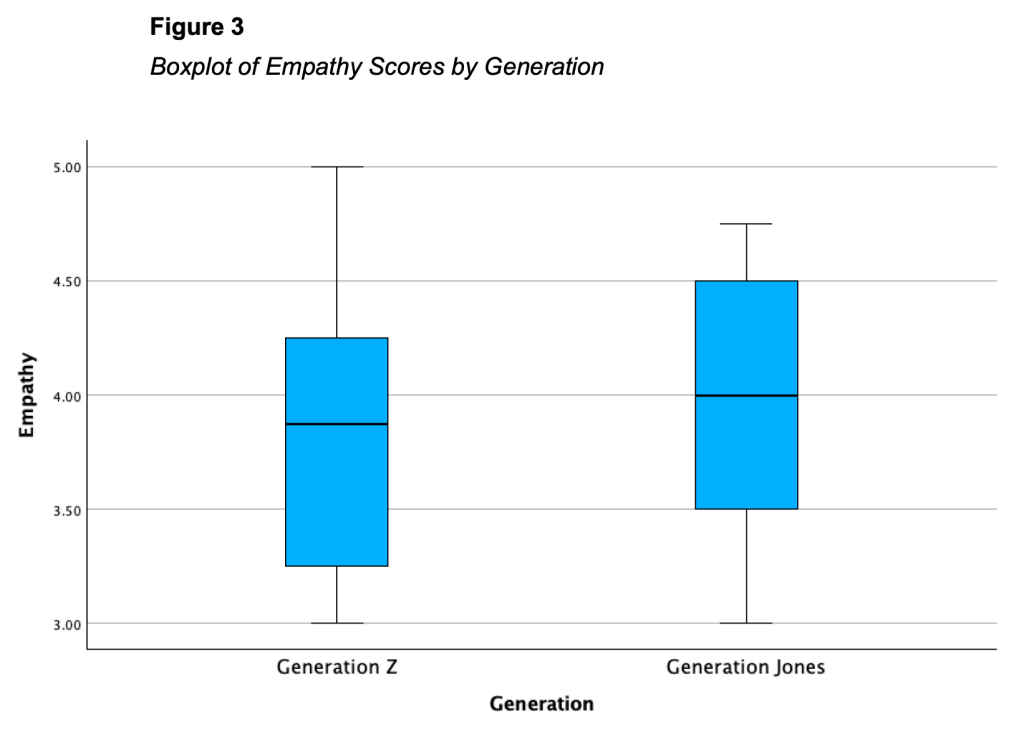
Dependent Attraction
For the variable Attraction, the same statistical procedures were applied as for the previous variables. Shapiro-Wilk tests indicated that the data met the assumption of normality for both Generation Z (p = .724) and Generation Jones (p = .498). Descriptive statistics revealed that Generation Z had a mean attraction score of 4.10 (SD = .55), while Generation Jones reported a mean score of 4.20 (SD = .62). Visual inspections of Q-Q plots and boxplots (Appendix E) supported these findings, showing minimal deviations from normality and comparable variability between the two groups.
Statistical Test Justification
Due to the violation of normality for certain variables, as evidenced by the Shapiro- Wilk test results (e.g., Dislike: p = .009 for Generation Z), non-parametric tests were used for further analyses. Specifically, the Mann-Whitney U test was employed to compare group differences across the dependent variables: Dislike, Empathy, and Attractiveness. This approach is appropriate for small sample sizes and non-normally distributed data. Hypothesis Testing
Mann-Whitney U Test: Dislike
To compare the scores of Dislike between Generation Z and Generation Jones, a Mann-Whitney U test was conducted due to the violation of normality in Generation Z’s data.
The results (Appendix F) indicated no significant difference in the distribution of Dislike scores across the two generations, U = 57.00, p = .631. The mean rank for Generation Z was 9.80, while for Generation Jones, it was slightly higher at 11.20. As the p-value exceeded the .05 threshold, the null hypothesis of no difference between the groups was retained, suggesting that generational differences in Dislike are not statistically significant in this sample.
Mann-Whitney U Test: Empathy
The data shows that the Mann-Whitney U test was used to compare the distributions of empathy across Generation Jones and Generation Z. As Shown in Appendix G, results indicated no significant difference between the groups (U = 56.5, p = .631), suggesting that both generations exhibit similar levels of empathy. The test outcomes, alongside visual representations of rank distributions, support the conclusion that generational membership does not notably impact empathy scores in this sample.
Mann-Whitney U Test: Attraction
The analysis of attraction scores between Generation Z and Generation Jones was conducted using the Mann-Whitney U test to compare distributions across the two groups. The results (Appendix H) showed no statistically significant difference in attraction scores between the two generations (U = 47.000, p = 0.853). The mean ranks were nearly identical, with Generation Z scoring a mean rank of 10.80 and Generation Jones scoring 10.20. This indicates that the perceptions of attraction are consistent across both generational cohorts, supporting the null hypothesis that the distributions are the same.
Discussion
Overview
The current study targets generational differences in weight-related stigmatisation, measured by three variables: Dislike, Empathy, and Attraction. While these results add significantly to current knowledge, no statistical differences between the generations of Z and Jones were shown in this analysis for any of the dependent variables.
Comparison with Research
Where the research design had postulated some generational differences in the three dependent variables, this had not been supported by the results. The Mann-Whitney U tests conducted on Dislike, Empathy, and Attraction all had p-values greater than the level of significance: p >.05. This supports the notion of relatively similar attitudes towards overweight and obese individuals in the two generations studied here. Importantly, even when descriptive statistics showed small differences in mean scores-favouring Generation Jones on Empathy and favouring Generation Z on Attraction difference failed to reach a level of statistical significance.
Comparison with Published Results
These findings are consistent with limited previous studies that indicate weight- related attitudes do not vary sharply across generational cohorts. For instance, studies by Keys (1955) and Harris et al. (1982) emphasized the dominant negative stereotypes against obesity within past generations, but this present study suggests that some such attitudes continue across the line of generations. Interestingly, modern findings, such as those by Cohen et al. (2020) and Stahl & Literat (2022), have shown Generation Z’s increased exposure to body-positive movements, yet this shift may not have translated to measurable generational differences in stigma levels. The failure to detect significant effects in the present study could be attributed to the small sample size, which may not have been sufficient to capture subtle trends or differences in attitudes influenced by cultural or social dynamics.
Implications for Future Research
Results have highlighted that this issue needs further investigation with larger and more diverse samples. Further research should, therefore, consider variables such as social status, cultural backgrounds, and personal experiences related to issues of weight since these may crucially influence attitudes. Additionally, longitudinal studies, building on findings such as those by Lendvai et al. (2022) on Generation Z’s health consciousness, could explore whether attitudes evolve over time in generational cohorts.
Practical Implications
From a practical point of view, the results of the present study imply that interventions aimed at weight-related stigma would not have to vary across age groups but could be generalised across generations. This may reduce the complexity of devising educational campaigns and public health initiatives targeting weight bias.
Strengths and Weaknesses
This study is mainly strengthened by a focus on generational comparisons rather than underexplored areas in the context of weight stigma research. Multiple dependent variables add depth to the analysis. There were several limitations to this study. Most likely, the small sample size reduced statistical power and increased the risk of Type II errors. Additionally, the imbalance in the sample-80% being female and the limited age brackets within each generation mean that generalisation may be limited. Future studies should, therefore, strive for a balance and representation to avoid such problems.
Appendix A
Appendix A: Information Sheet, Consent Form, Full Questionnaire, and Debriefing Page.
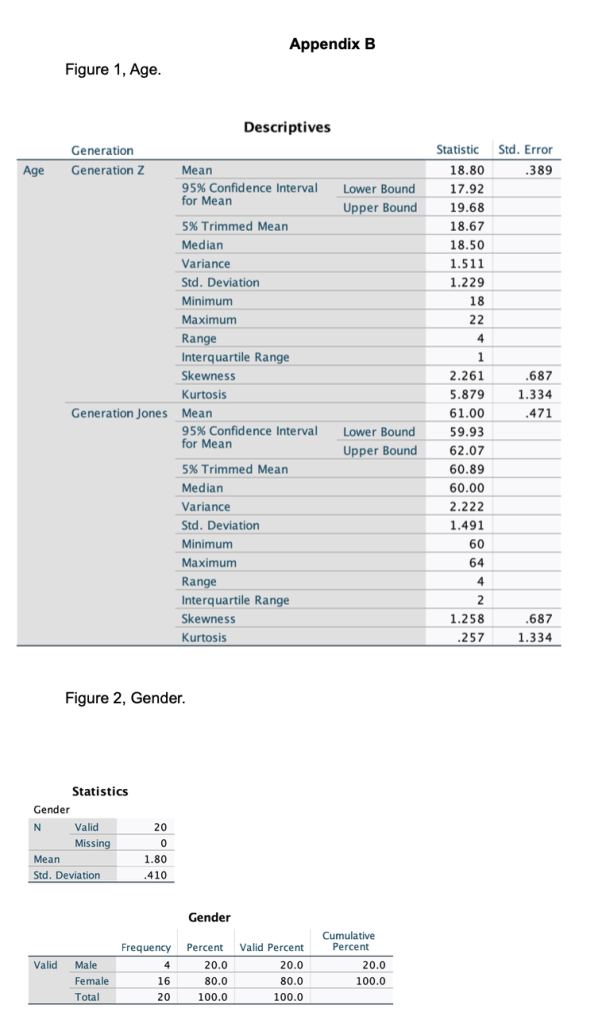


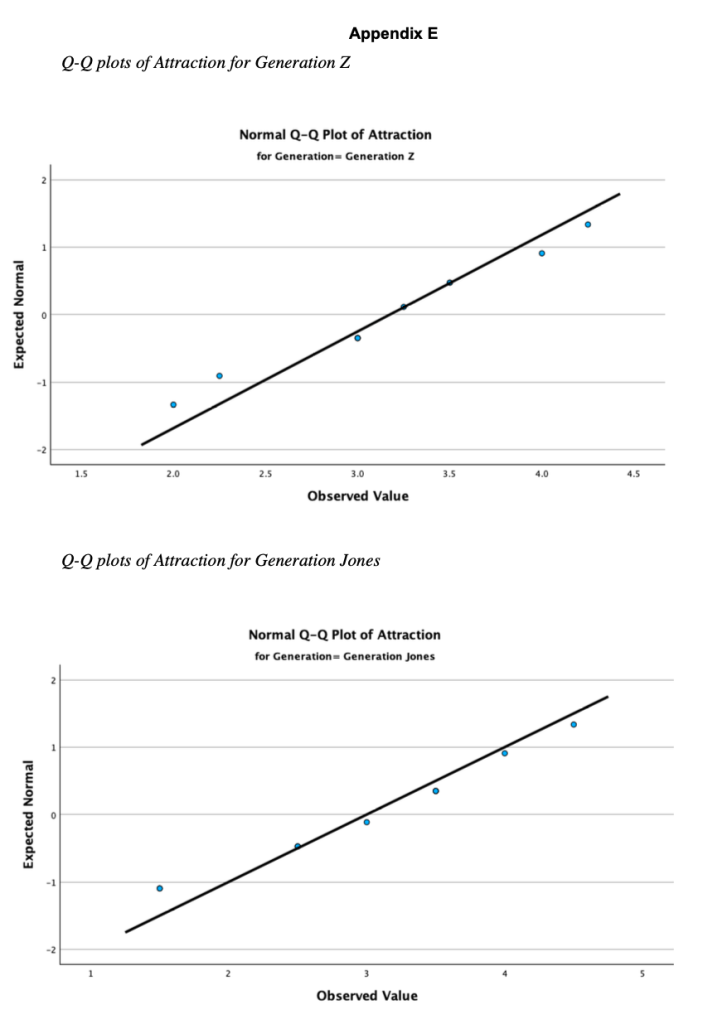

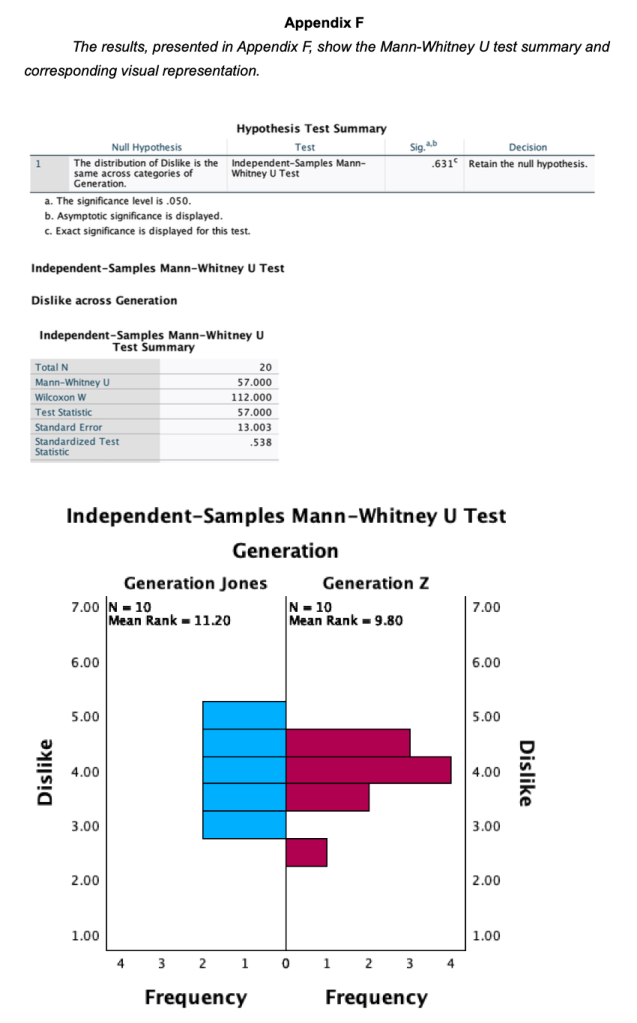
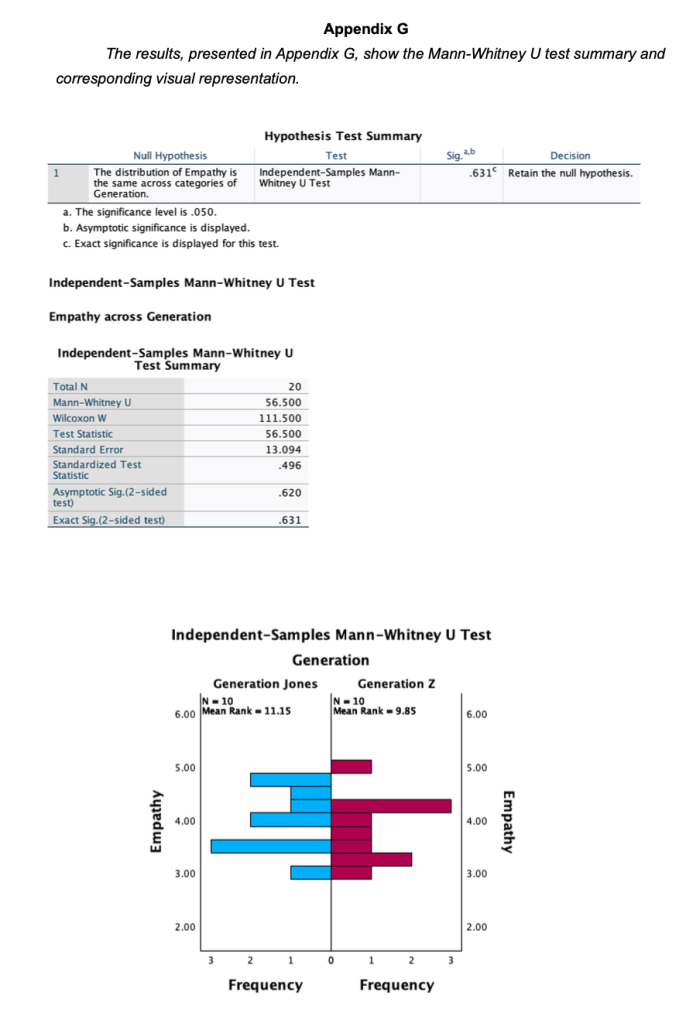
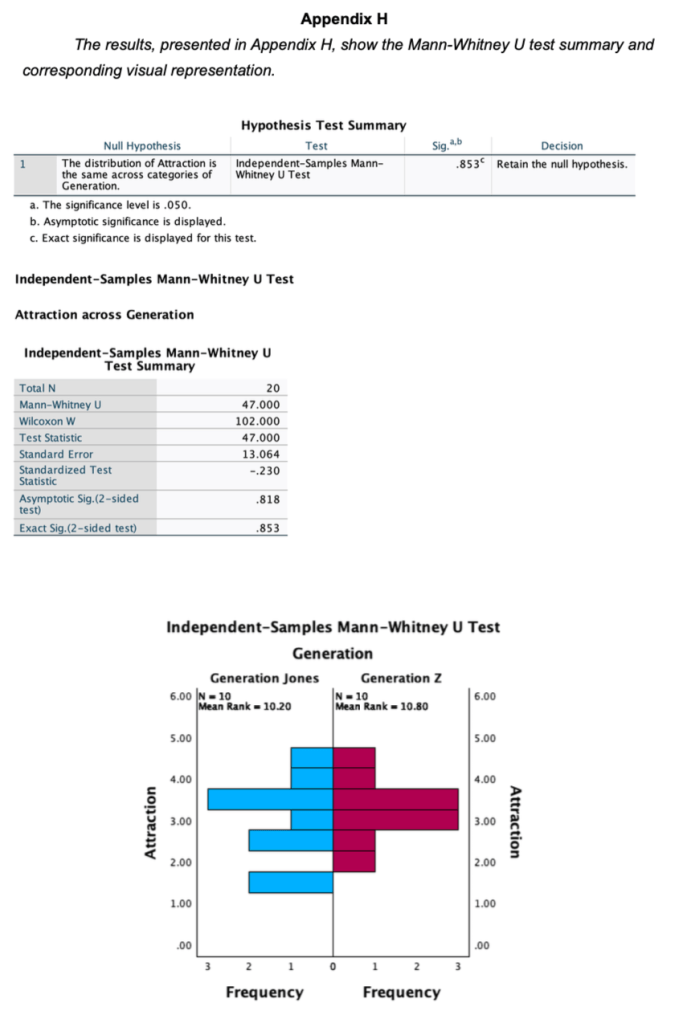
References
Chen, P., & Ha, L. (2023). Gen Z’s social media use and global communication. Online Media and Global Communication, 0. https://doi.org/10.1515/omgc-2023-2006
Cohen, R., Newton-John, T., & Slater, A. (2021). The case for body positivity on social media: Perspectives on current advances and future directions. Journal of Health Psychology, 26(13), 2365-2373. https://doi.org/10.1177/1359105320912450
Harris, M. B., Harris, R. J., & Bochner, S. (1982). Fat, four-eyed and female: Stereotypes of obesity, glasses and gender. Journal of Applied Social Psychology, 6, 503-516.
Keys, A. (1955). Obesity and heart disease. Journal of Chronic Diseases, 1, 456-460. Larkin, J. E., & Pines, H. A. (1979). No fat persons need apply. Sociology of Work and
Occupations, 6, 312-327.
Lendvai, M., Kovács, I., Balázs, B., & Beke, J. (2022). Health and environment conscious
consumer attitudes: Generation Z segment personas according to the LOHAS model.
Social Sciences. https://doi.org/10.3390/socsci11070269
Millman, M. (1980). Such a pretty face: Being fat in America. New York: Norton. Rothblum, E., Brand, P., Miller, C., & Oetjen, H. (1990). The relationship between obesity,
employment discrimination, and employment-related victimization. Journal of Vocational
Behavior, 37, 251-266. https://doi.org/10.1016/0001-8791(90)90044-3
Stahl, C., & Literat, I. (2022). #GenZ on TikTok: The collective online self-portrait of the
social media generation. Journal of Youth Studies, 26, 925-946. https://doi.org/
10.1080/13676261.2022.2053671
Tucker, A. (2020). The relationship between optimism and BMI in Generation Z – An
exploratory investigation. Honors College Theses, 463. https://
digitalcommons.georgiasouthern.edu/honors-theses/463
Wooley, S. C., & Wooley, O. W. (1979). Obesity and women—I. A closer look at the facts.
Women’s Studies International Quarterly, 2, 69-79.
Leave a comment